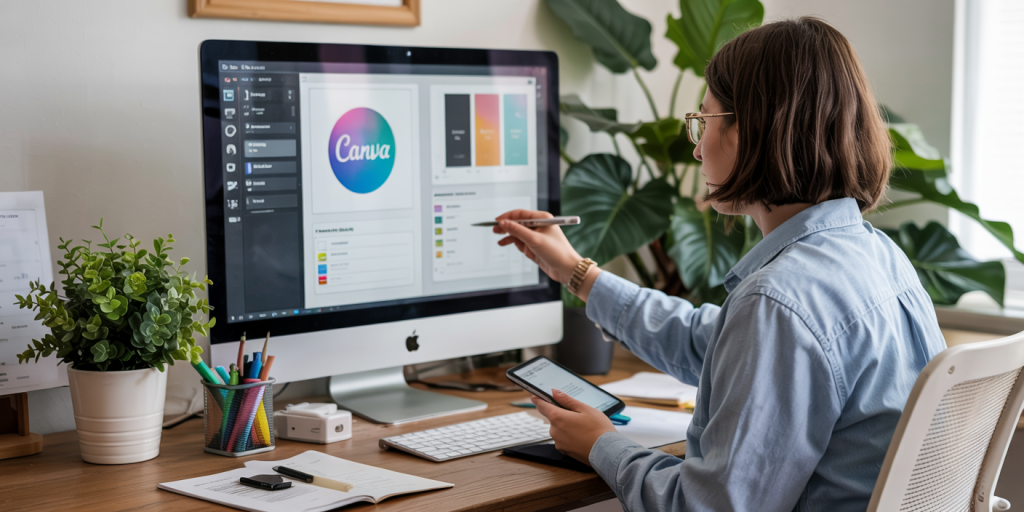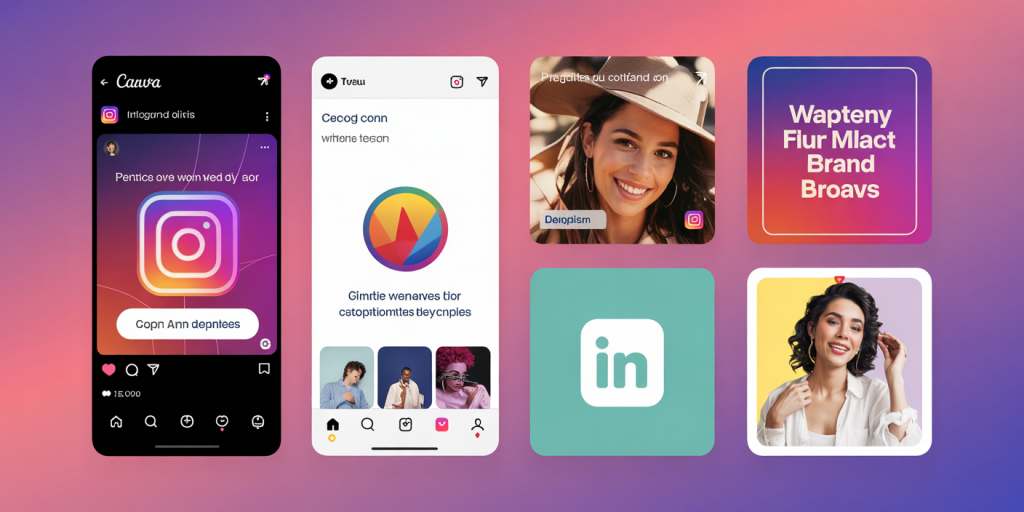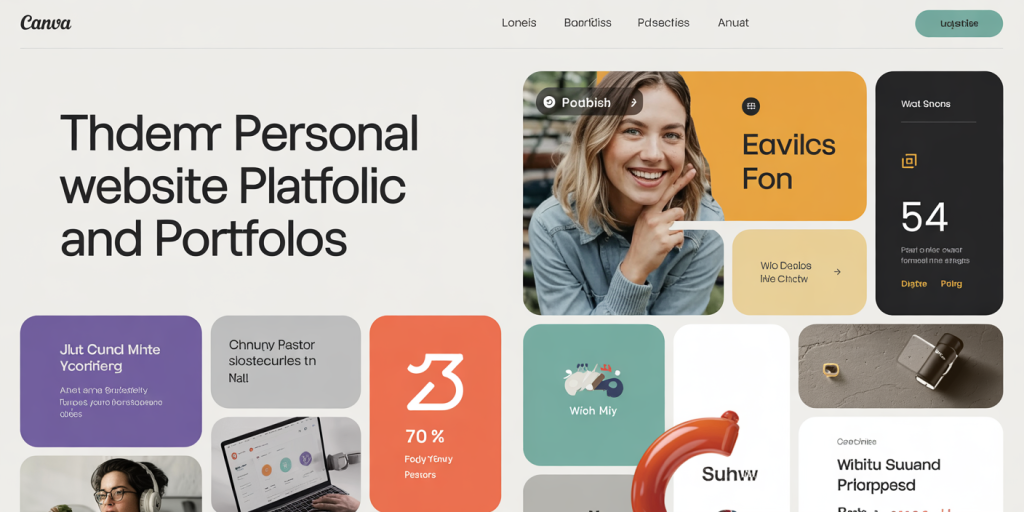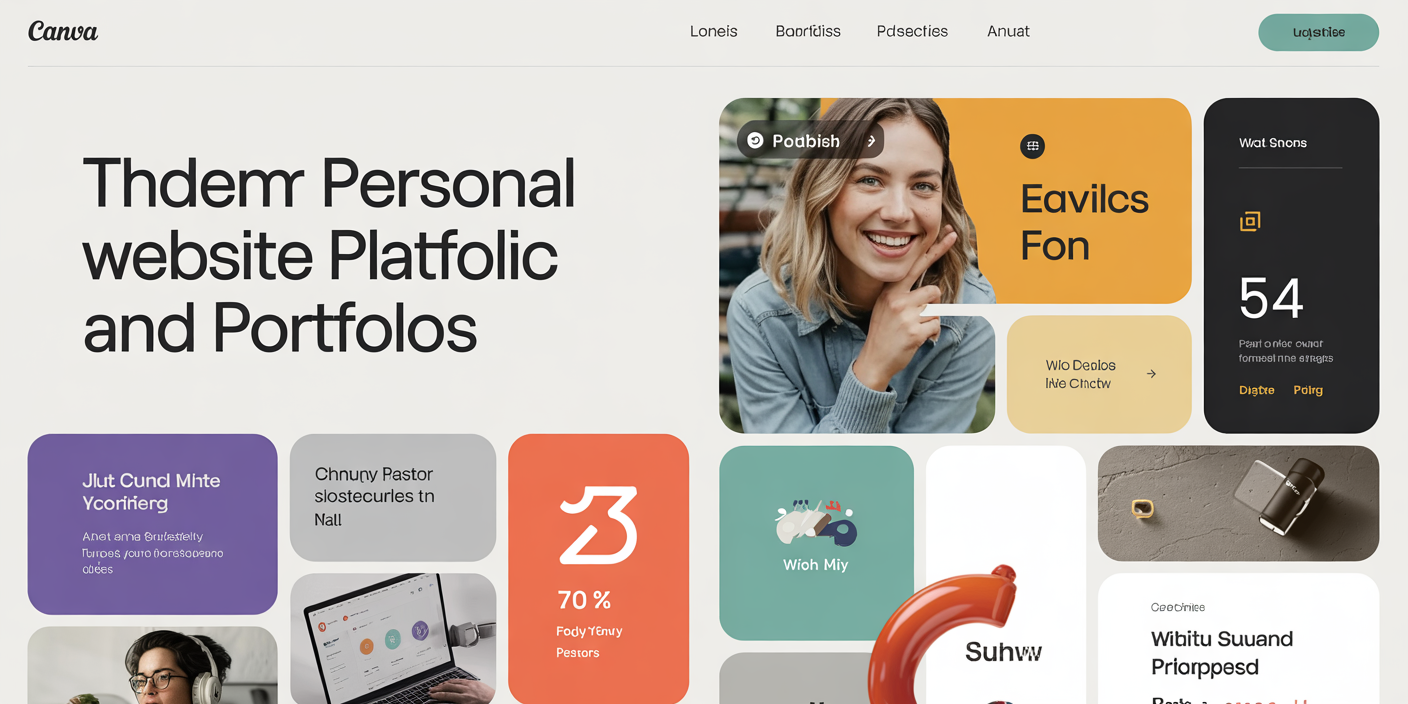How to Use Canva for Building a Personal Brand Online
In today’s digital age, establishing a strong personal brand online is crucial for professionals, entrepreneurs, and creatives alike. A compelling personal brand can open doors to new opportunities, enhance credibility, and foster meaningful connections. However, creating consistent and visually appealing content that conveys your unique value proposition can feel overwhelming. This is where Canva, a versatile graphic design tool, comes into play. By leveraging Canva’s user-friendly interface and extensive design resources, individuals can develop a professional and cohesive online presence without needing advanced design skills.
The significance of visual branding has grown drastically in recent years. Research by Adobe reveals that 38% of people will stop engaging with a website if the content or layout is unattractive, highlighting the critical impact of design quality on brand perception. Canva democratizes the design process by allowing users to create striking visuals for social media, websites, portfolios, and more. This article explores how to use Canva strategically to build and maintain an effective personal brand online, illustrated with practical insights and real-world examples.

Understanding the Role of Visual Branding in Personal Branding
Visual branding is a set of design elements—including colors, typography, logos, and imagery—that consistently represent your brand identity. For personal branding, visual cues communicate your personality, professionalism, and message to your target audience. This consistency helps build recognition and trust over time, making you memorable in crowded digital spaces.
Take the example of Mari Smith, a renowned social media strategist. Mari’s online brand is distinguished by her consistent use of purple hues and clean typography across her website, social media, and marketing materials. This cohesive visual style makes her instantly recognizable, contributing to her authority in the industry. Similarly, Canva enables non-designers to adopt such consistent branding by providing customizable templates and brand kits, which can include preset color palettes, fonts, and logos. This streamlines the creation of branded content that reinforces your personal identity.

Getting Started with Canva: Setting Up Your Brand Kit
Before diving into content creation, setting up your Brand Kit in Canva is a foundational step. Canva Pro users can upload logos, define brand colors, and select brand fonts to maintain uniformity across all designs. This feature alone saves significant time and ensures each graphic aligns with your personal brand guidelines.
For example, consider a freelance writer who wants to portray a minimalist and professional aesthetic. By uploading a simple logo, choosing muted color tones like navy blue and gray, and selecting clean sans-serif fonts, she crafts a Brand Kit tailored to her niche. Every social media post, e-book cover, or blog header made thereafter automatically incorporates these elements, creating a seamless brand experience.
If you are on the free version of Canva, you can manually apply your brand colors and fonts each time, but this may be less efficient. The following table illustrates key features and pricing for Canva’s main tiers relevant to personal branding:
| Feature | Canva Free | Canva Pro ($12.99/month) | Canva Enterprise |
|---|---|---|---|
| Brand Kit | No | Yes (multiple kits possible) | Yes (Advanced controls) |
| Unlimited Templates | Yes | Yes | Yes |
| Magic Resize | No | Yes | Yes |
| Background Remover | No | Yes | Yes |
| Storage (GB) | 5 | 100 | 100+ |
| Team Collaboration | Limited | Yes | Advanced |
Using Canva Pro’s Brand Kit is highly recommended for personal brands aiming for professional polish and efficiency.
Creating Engaging Social Media Content with Canva
Social media platforms like Instagram, LinkedIn, and Twitter are essential channels for personal branding. Visual content shared on these platforms significantly impacts engagement and follower growth. Canva offers a wealth of templates optimized for each platform’s dimensions, ranging from Instagram Stories (1080×1920 pixels) to LinkedIn posts (1200×627 pixels).
Practical application example: Neil Patel, a digital marketing expert with millions of followers, consistently uses branded graphics featuring his logo, bold fonts, and vibrant colors in his Instagram content. This approach enhances brand recognition and drives higher engagement rates.
To replicate such success, start by selecting a platform-specific template on Canva. Customize the template with your brand colors, logo, and key messaging. Utilize Canva’s drag-and-drop editor to add photographs, icons, and illustrations that align with your personal branding story. It’s crucial to maintain visual consistency by using your Brand Kit or saved styles for fonts and color schemes.
Additionally, Canva’s content planner, available in the Pro plan, allows scheduling of posts directly, streamlining your social media strategy. A study from Social Media Examiner indicates that consistency in posting increases audience retention by up to 30%, emphasizing why tools like Canva’s planner can be invaluable.
Designing Personal Websites and Portfolios
Your personal website or portfolio is often the primary platform for showcasing your expertise and professional journey. A visually appealing website enhances credibility and encourages visitors to explore your offerings further. Canva’s design flexibility is not limited to social media; it extends to website graphics and presentation decks.
Although Canva itself is not a website builder, it integrates smoothly with platforms like WordPress, Wix, and Squarespace. You can design custom elements such as banners, blog post images, and infographics in Canva and upload them to your site, ensuring consistent branding throughout.

For instance, Jessica Hische, a lettering artist and designer, uses custom-crafted graphics to create a visually cohesive online presence. Using Canva, non-designers can similarly produce professional graphics that mirror Jessica’s attention to detail and style, differentiating their website from generic templates offered by website builders.
It’s practical to use Canva’s grid and frame features to produce visually balanced images and infographics, which can help communicate your skills, achievements, or workflow clearly. Remember, websites with consistent and engaging visuals experience on average 38% more conversions (source: Adobe Analytics).
Producing Branded Marketing Materials and Presentations
Marketing collateral, such as e-books, brochures, and presentations, reinforces your personal brand when targeting clients or conference audiences. Canva’s drag-and-drop interface and extensive library of templates make designing these materials both easy and impactful.
For example, consider a life coach preparing a webinar presentation. By using a branded template in Canva, the coach ensures every slide contains their logo, color palette, and consistent font use. Such branding professionalism sets them apart and leaves a lasting impression on their audience.
Moreover, Canva enables exporting your designs in various formats including PDF, PPT, and JPEG, catering to different marketing needs. The ability to collaborate and share designs with team members or clients also streamlines the approval process.
A comparative overview of Canva versus traditional design approaches highlights the advantages:
| Aspect | Canva | Traditional Graphic Design |
|---|---|---|
| Cost | Low (Free to $13/month approx.) | High (Hiring designers/Agencies) |
| Time Efficiency | High (Templates & tools) | Longer (Custom designs from scratch) |
| User Expertise Needed | Minimal to None | High (Professional skills required) |
| Brand Consistency | Easy via Brand Kit & templates | Depends on designer’s processes |
| Flexibility | High | Variable depending on designer |
Given these factors, Canva stands out as an excellent solution for personal brand builders seeking quality and efficiency.
Future Perspectives: Evolving with Canva and the Digital Landscape
As digital trends advance, personal branding tools like Canva continue to evolve rapidly. Artificial Intelligence (AI) integration, such as Canva’s AI-powered design suggestions and Magic Write for copy assistance, are making content creation faster and more intuitive. These innovations reduce the barrier between ideas and polished output, empowering individuals to maintain dynamic and relevant personal brands.
Looking ahead, Canva’s expanding collaboration features and integration with popular platforms hint at an ecosystem where personal branding becomes more interconnected and scalable. This is crucial as more professionals embrace remote work and virtual networking, demanding agile tools for brand management.
Furthermore, data indicates that video content will dominate online engagement—with Cisco predicting that by 2024, video will account for 82% of all internet traffic. Canva’s growing suite of video editing and animation tools positions personal brand builders to tap into this trend seamlessly without needing specialized software.
In summary, leveraging Canva today not only simplifies personal branding efforts but also prepares individuals for tomorrow’s digital demands. Staying updated with its new functionalities and aligning them with your brand objectives will ensure long-term relevance and success in the competitive online space.
